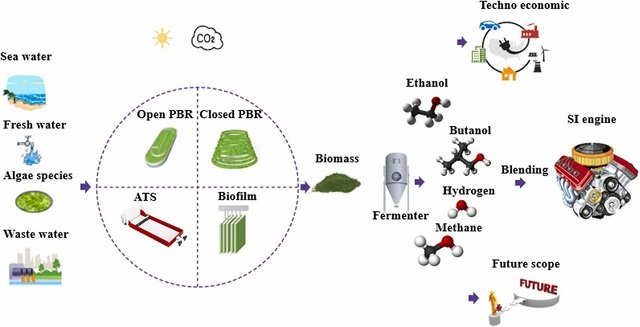
Researchers from the University of Jiroft (Iran) and the Agricultural Research, Education and Extension Organization (AREEO) have discovered a surprising benefit for Nile tilapia (Oreochromis niloticus): the incorporation of a specific amount of “wet biofloc” into their diet!
The new study published in the journal Aquaculture International aimed to evaluate the effects of different concentrations (BFT25, 25%; BFT50, 50%; BFT75, 75%; and BFT100, 100%) of wet biofloc on Nile tilapia, Oreochromis niloticus.
Biofloc is a complex community of microorganisms that thrives in aquaculture systems. It is composed of algae, bacteria, and other tiny organisms that can provide essential nutrients for fish. Various studies have explored the use of biofloc meal to replace fish meal in tilapia diets; however, this study investigated the effects of feeding Nile tilapia fry with different concentrations of wet biofloc along with their commercial feed.
The Power of 25%
The research team compared five groups of tilapia. One group received only commercial feed, while the others were fed a combination of commercial feed and varying amounts of wet biofloc (25%, 50%, 75%, and 100%). The researchers monitored the fish for 38 days, tracking their growth, survival, body composition, enzyme activity (digestion and liver function), and immune response.
Interestingly, the group fed with 25% biofloc exhibited the best overall performance:
- Higher total biomass: Compared to the control group fed only with commercial feed, the tilapia with the 25% biofloc supplement showed a significant increase in total weight gain. The fry fed with 25% wet biofloc had a significantly higher total biomass (741.51 g) (P < 0.05).
- Improved survival rates: The 25% biofloc group had the highest survival rate (99.74%), highlighting the potential health benefits of this dietary addition.
- Enhanced body composition: Fish fed with the 25% biofloc diet had better protein and lipid content, indicating a healthier overall composition.
- Improved digestive and liver enzyme activity: Key enzymes involved in digestion and liver function were significantly higher in the 25% biofloc group, suggesting better nutrient utilization and overall health.
- Stronger mucosal immunity: The 25% biofloc treatment produced higher levels of lysozyme and immunoglobulin, crucial components of the fish immune system.
Beyond 25%: Not Always Better
Interestingly, the study found that increasing the biofloc content beyond 25% did not yield greater benefits. In fact, the group fed with a 100% biofloc diet exhibited the lowest levels of mucosal immunity. This suggests that there may be an optimal balance for biofloc incorporation and exceeding it could have negative consequences.
Impact on Tilapia Farming
This study highlights the potential of biofloc technology to enhance Nile tilapia aquaculture. By incorporating biofloc into fish diets, fish farmers could potentially achieve:
- Reduced reliance on commercially produced feeds: Biofloc provides a natural source of nutrients, potentially lowering feed costs. According to the study’s results, wet biofloc had protein levels ranging from 26.84 to 31.85 (% DM), lipid levels ranging from 1.68 to 2.51 (U/mg protein), and ash levels ranging from 31.85 to 36.44 (% DM).
- Improved fish health and survival: The positive effects on growth, body composition, and immunity suggest healthier fish populations. According to the study’s results, in terms of mucosal immunity, the BFT25 treatment exhibited the highest levels of lysozyme (Lys. 34.33 U/mL/min) and immunoglobulin (Ig. 51.66 mg/100 mL).
- More sustainable practices: Biofloc helps manage water quality within aquaculture systems, contributing to a more environmentally friendly approach.
Conclusion
This study suggests that incorporating a moderate amount of biofloc (around 25%) into the diet of Nile tilapia can significantly enhance their growth, health, and immunity. This approach offers a sustainable and potentially cost-effective way to improve aquaculture practices.
Stay Always Informed
Join our communities to instantly receive the most important news, reports, and analysis from the aquaculture industry.
While these findings are promising, further research is needed to explore the long-term effects of biofloc on Nile tilapia and other aquaculture species. Additionally, optimizing biofloc composition and management techniques may further enhance its benefits for sustainable fish farming.
Contact
Mohammad Hossein Khanjani
Department of Fisheries Sciences and Engineering, Faculty of Natural Resources, University of Jiroft
Jiroft, Kerman, Iran
Email: m.h.khanjani@ujiroft.ac.ir
Reference
Khanjani, M.H., Sharifinia, M. Feeding Nile tilapia with varying levels of biofloc: effect on growth performance, survival rate, digestive and liver enzyme activities, and mucus immunity. Aquacult Int (2024). https://doi.org/10.1007/s10499-024-01561-w
Editor at the digital magazine AquaHoy. He holds a degree in Aquaculture Biology from the National University of Santa (UNS) and a Master’s degree in Science and Innovation Management from the Polytechnic University of Valencia, with postgraduate diplomas in Business Innovation and Innovation Management. He possesses extensive experience in the aquaculture and fisheries sector, having led the Fisheries Innovation Unit of the National Program for Innovation in Fisheries and Aquaculture (PNIPA). He has served as a senior consultant in technology watch, an innovation project formulator and advisor, and a lecturer at UNS. He is a member of the Peruvian College of Biologists and was recognized by the World Aquaculture Society (WAS) in 2016 for his contribution to aquaculture.




